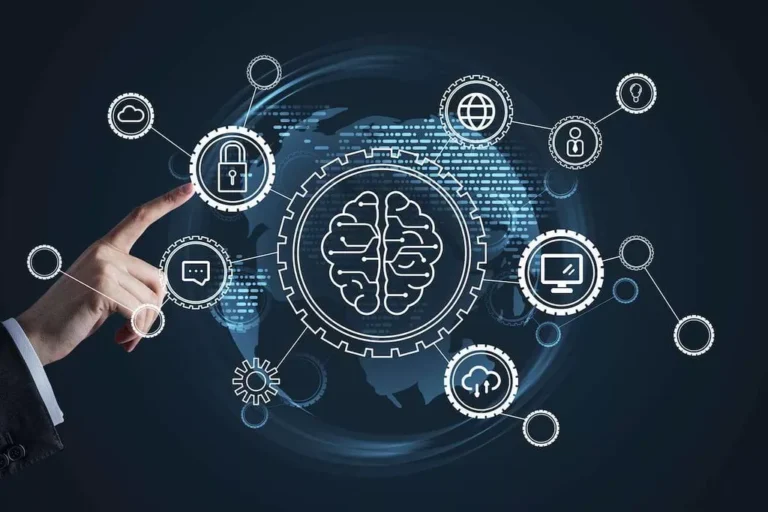By following the above steps of the SDLC,it’s attainable to make certain that the system is designed based on the client’sneeds and wishes. It is at this level that the SoftwareRequirements Specification (SRS) doc is produced. Now that the developmentteam has a clear understanding of the needs and wants of their shoppers, theBusiness Analyst will draft an SRS that particulars the development team’sunderstanding of the scenario at hand. With Out this significant info, the SDLCwould not be a worthwhile venture for the development staff. The strategy planning stage of the SDLC cannot beconducted with out the information offered from the feasibility study—and notjust as a outcome of most developers won’t proceed with out it. Throughout all this, the Enterprise Analystserves as the primary liaison between he improvement company and its client,communicating the needs of the enterprise again to the development group.
As you’ll be able to see, completely different methodologies are used relying on the particular imaginative and prescient, traits, and necessities of individual initiatives. Figuring Out the structure and nuances of every model can help to choose the one that greatest fits your project. The verification and validation model tends to be resource-intensive and inflexible. For initiatives with clear requirements the place testing is necessary, it might be useful. The final but not least important stage of the SDLC course of is the maintenance stage, where the software is already being utilized by end-users.
It is at this point that the precise customers begin to work with the system in a take a look at environment while an skilled in high quality administration displays how nicely the system meets the objectives Mobile app development set out during planning. This step will continue till all issues or shortcomings are identified and corrected. The background insurance policies and procedures that ensure the integrity of the information may even be examined and reviewed to substantiate that the new system complies with all firm and government necessities. Finally, testing on the finish of the development phase can slow down development groups.
Now it have to be tested to make positive that there aren’t any bugs and that the end-user experience is not going to negatively be affected at any level. Builders will comply with any coding pointers as defined by the organization and utilize completely different tools such as compilers, debuggers, and interpreters. Nonetheless, the general consensus is that there are seven fundamental levels in the SDLC. Largely used for creating and delivering a extensive range of concepts, this mannequin perfectly suits the purchasers who don’t have a transparent idea or imaginative and prescient of what their last product should look like. Whereas a Waterfall mannequin allows for a high degree of construction and clarity, it may be somewhat rigid.
However, at Intellectsoft, we consider that the right method, combined with know-how, can handle them successfully. Basically, SDLC trades flexibility for management by imposing construction. It is more generally used for giant scale initiatives with many builders.
Earlier Than we even begin with the planning stage, the best tip we may give you is to take time and acquire a correct understanding of the app development life cycle. Usually, the extra steps defined in an SDLC model, the more granular the stages are. For advanced or high-visibility projects, it can be helpful to define granular stages https://www.globalcloudteam.com/ — these can present early clarity on necessities and expectations and minimize the potential for battle, confusion or rework.
- The System Improvement Life Cycle (SDLC) is the process of making or altering systems, and the fashions and methodologies used during the development section of this course of are essential for a successful outcome.
- The info collected serves as the foundation for developing a software program system that takes organizational difficulties and consumer expectations into consideration.
- Elements corresponding to project measurement, complexity, stakeholder requirements, and team dynamics should be thought of to make sure the chosen mannequin aligns with the project’s aims and constraints.
- For finance and advertising teams, manually calculating pricing by section to introduce your shoppers could be extremely difficult.
As soon because the software program is within the testing stage, it is virtually unimaginable to go back and alter some features that were not initially thought over. The waterfall model is among the earlier approaches to SDLC, and it adopts a linear, sequential method, that means that the staff has to completely complete one phase before starting one other one. The end result of the previous stage works as a foundation for the next one. This strategy is usually a good selection for small tasks with clear and well-documented requirements and adequate assets supported by the required experience. Cloud-based options are considerably impacting SDLC, providing scalable and versatile environments that facilitate collaboration, testing, and deployment.

Management Information System (mis)
This model, mirroring the form of the letter ‘V’, starts with unit checks at the lowest level of improvement and ascends via integration, system, and acceptance testing. The inherent construction of the V-Model promotes rigorous timeline adherence, with each section clearly outlined and depending on the completion of the previous phase’s deliverables. Deciphering the SDLC includes understanding the intricate course of needed to transform a high-level idea into high-quality software program.

Mastering System Growth Life Cycle: A Detailed Guide
The software growth course of is illustrated in the waterfall mannequin as a sequential, linear move. This implies that a improvement course of phase can solely begin after the one earlier than it’s completed. The methods growth life cycle has a far bigger scope than the software program improvement life cycle, which is primarily focused on software development phases of sdlc in system analysis and design initiatives. It consists of improvement efforts and actions related to folks, networks, processes, and information.
For the client’s entertainment business, we improved their legacy software by running a full IT and code check, fixing points, and making the system better for patrons. Some of the current examples embody purchasers coming to us to create AI options for their services while their data simply was not ready for the advanced tasks. We advise stepping back, speaking with an organization goal, and dealing on preserving the information clean (centralized, structured, and segmented).
This methodology saves developers the risk of spending months or even years on a process that ends up failing due to a small mistake at an early stage. As An Alternative, the team members are anticipated to work instantly with prospects to know the software program objectives and counsel options in a fast and streamlined method. Whereas the team is focused on delivering consistent product functionality at each iteration, there is a chance to continually improve and redistribute the general backlog of the product. New or modified backlog gadgets can be scheduled for the subsequent iteration, permitting for changes to be made over several weeks.
Most firms and organizations that design techniques use these steps to ensure the ultimate system is efficient, meets all of the intended objectives, and has the best potential probability of success. For many initiatives, the methods improvement life cycle contains the narrower software development lifecycle. In other words, the systems growth life cycle is a superset of the software growth lifecycle. The SDLC performs a pivotal function in reaching the twin goals of perfection and suppleness in software development. Via its iterative process, SDLC allows for continuous refinement and enhancement, ensuring that the ultimate product is as near perfection as possible. Simultaneously, its flexibility permits groups to adapt to changes in project scope, consumer requirements, and technology tendencies, ensuring that the software program stays related and efficient.


